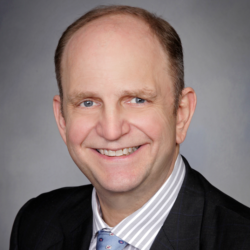Viewpoint: Why should a doctor licensed to practice in California be unable to do so in Montana?
"While the European Union allows free movement of healthcare workers across its 27 member countries, the United States does not allow this movement across state borders."
Suppose you wanted to take a family vacation. Your driver’s license allows you to drive in any state. If you are a healthcare provider, your license only allows you to see patients in the state in which you are licensed. And yet, people are more mobile and more able to work remotely than in the past. Licensing laws are often defended on the grounds that they promote safety, but money and control play a role. Medical boards take in over $100 million annually in licensing fees. It typically takes 3-6 months for a physician to complete the licensing process.
Licensing is a Problem
Recognition that medical licensing is often an obstacle to meeting the needs of patients is not new. Solutions to excess bureaucracy are often new bureaucracies. The Interstate Medical Licensure Compact (IMLC) is one such bureaucratic solution. Although the goal of the IMLC was to remedy bureaucracy through license portability, substantial resistance from state medical boards undermined achieving this goal. IMLC applicants still face most of the same bureaucratic fees and delays. Physicians must still apply for licenses state by state, often on an annual basis. To be licensed for the entire country, it would cost over $20,000 in application fees, with similar renewal fees every few years. As of Oct. 31, 2019, the IMLC has issued 6,671 state medical licenses to 4,446 physicians. States approved 5,080 of those licenses, which represents less than .5% of practicing U.S. physicians.
During natural disasters, affected states often suspend licensing laws for health care workers. However, the COVID-19 pandemic impacted all states simultaneously, greatly magnifying the problems caused by interstate restrictions of state licensing laws. In 2020, The Centers for Medicare and Medicaid Services (CMS) and almost every state in the country temporarily waived the requirement that physicians be licensed in the state their patients are located. In a matter of months, healthcare care workers could treat patients anywhere in the country. The impact was especially important for patients living in rural Montana, where 52 out of 56 counties are designated as physician shortage areas and 9% of counties have no physicians at all.
Unfortunately, now that the state emergency powers have ended, so has the temporary waiver of licensing laws that allowed a healthcare license granted in one state to be recognized as valid in another. We are now right back where we started. One important question is, were any patients harmed because of this waiver? I doubt that anyone knows.
Make it Permanent
Montana faces a critical doctor shortage. While the European Union allows free movement of healthcare workers across its 27 member countries, the United States does not allow this movement across state borders. The assumption that licensing guarantees quality of care or safety should be challenged. 63% of studies assessing the link between licensure and quality or safety found negligible effects. Of those that did find an effect, more found that licensure reduces safety and quality than increases it. State medical boards cannot assure a high standard of care. They do not review physicians on a regular basis and they do not evaluate physicians at the point care is given. What they can do is set a minimum qualification requirement and decrease the likelihood of fraud. Physician employers and patients still need to use due diligence in selecting physicians.
Montana should reign in its mission creep and recognize out-of-state health practitioner licenses. Montana can become a national medical destination. Montana can make permanent the COVID-19 Emergency Healthcare Registration. Any licensed healthcare professional who wishes to practice in Montana will still be evaluated by the Montana Department of Labor and Industry. They will ensure that home state licenses are compatible with Montana licensing regulations, verify the license is currently active, unrestricted, and in good standing, then issue a registration to work in Montana. This process should take much less than the current 30 days.
There’s no reason to re-impose state licensing restrictions post COVID-19. We have a unique opportunity to welcome out-of-state healthcare professionals to care for Montanans without going through the laborious process of re-licensing.
Healthcare Viewpoints is a monthly series featuring original columns from Montana healthcare leaders focused on addressing the challenges presented by our broken healthcare system. The opinions of guest authors do not necessarily represent the policy positions of the Frontier Institute.
